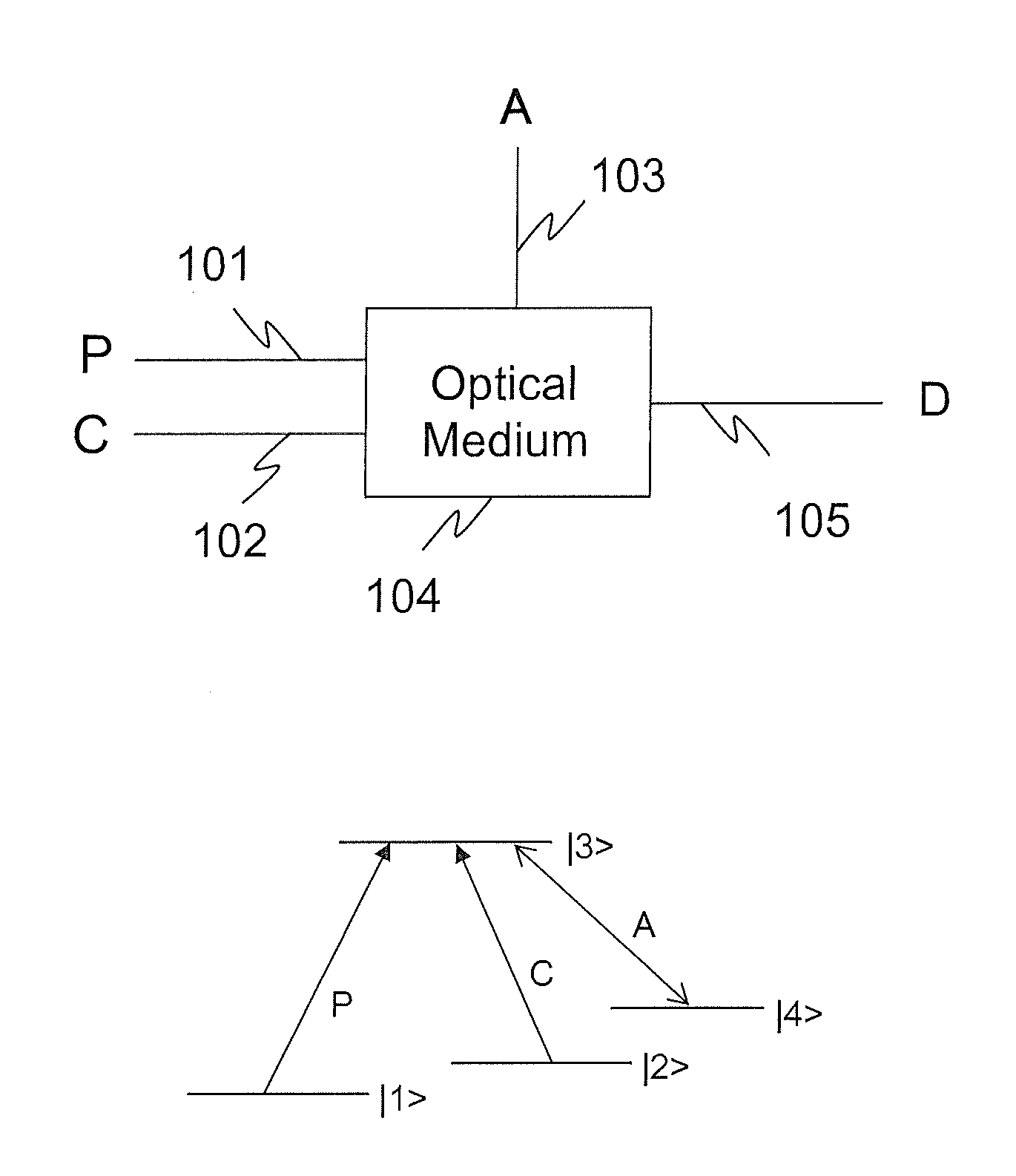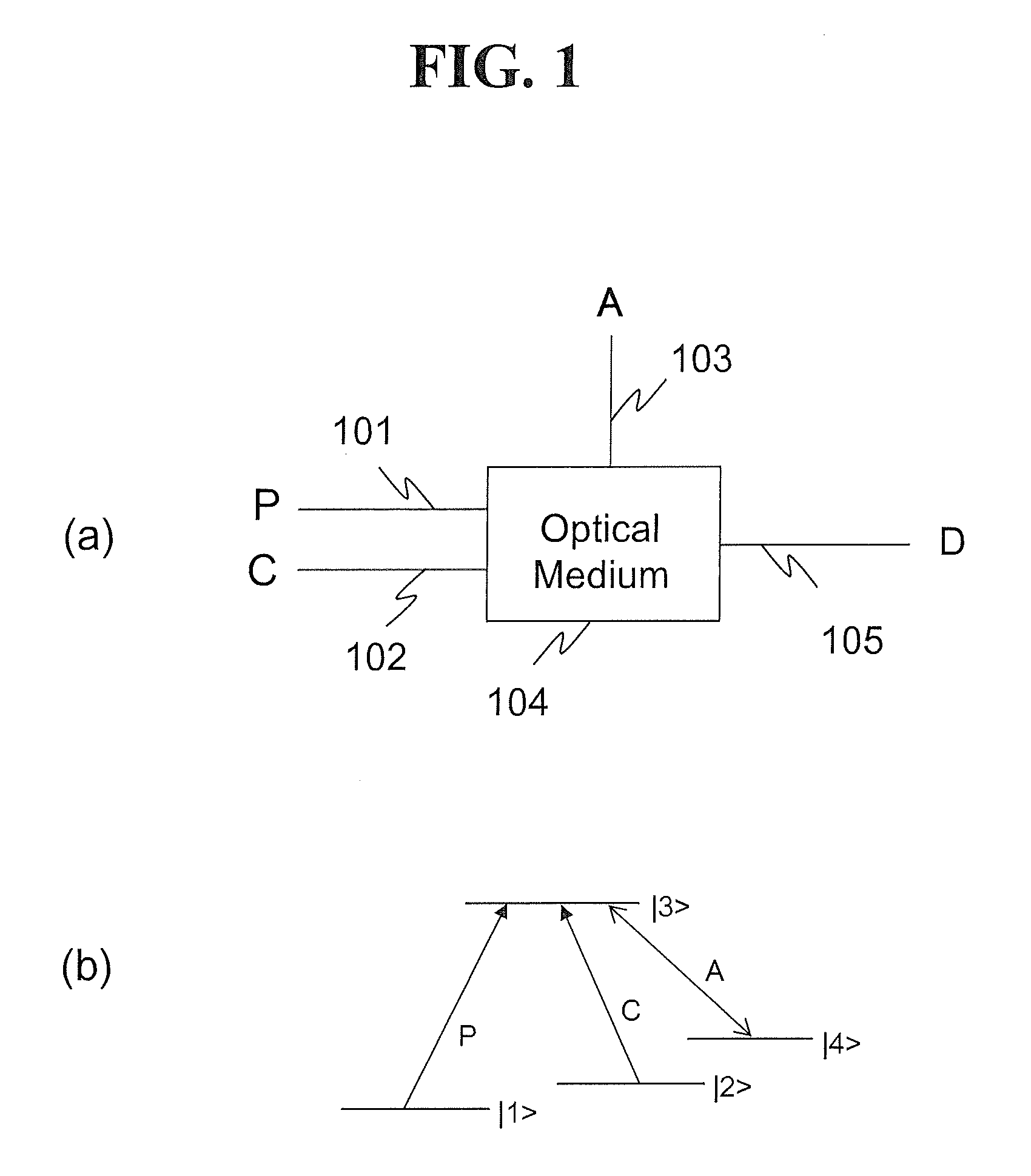Quantum optical data storage
a quantum memory and optical data technology, applied in the field of quantum optical data storage, can solve the problems of severe limitation of the memory data rate, the time needed for the refractive index change, and the resonant raman scattering or eit-based quantum memory techniques have a severe limitation in memory data rate,
- Summary
- Abstract
- Description
- Claims
- Application Information
AI Technical Summary
Benefits of technology
Problems solved by technology
Method used
Image
Examples
Embodiment Construction
[0027]Reference will now be made in detail to some embodiments, examples of which are illustrated in the accompanying drawings.
[0028]Though the present teachings may be variously modified and have several embodiments, specific embodiments will be shown in drawings and be explained in detail. However, the present teachings are not meant to be limited, but it is intended that various modifications, equivalents, and alternatives are also covered within the scope of the claims.
[0029]Although terms of ‘first’, ‘second’, etc. are used to explain various components, the components are not limited to such terms. These terms are used only to distinguish one component from another component. For example, a first component may be referred to as a second component, or similarly, the second component may be referred to as the first component within the scope of the present invention.
[0030]The term ‘and / or’ is used to include a combination of a plurality of disclosed items or one of the items.
[00...
PUM
 Login to View More
Login to View More Abstract
Description
Claims
Application Information
 Login to View More
Login to View More - R&D
- Intellectual Property
- Life Sciences
- Materials
- Tech Scout
- Unparalleled Data Quality
- Higher Quality Content
- 60% Fewer Hallucinations
Browse by: Latest US Patents, China's latest patents, Technical Efficacy Thesaurus, Application Domain, Technology Topic, Popular Technical Reports.
© 2025 PatSnap. All rights reserved.Legal|Privacy policy|Modern Slavery Act Transparency Statement|Sitemap|About US| Contact US: help@patsnap.com



